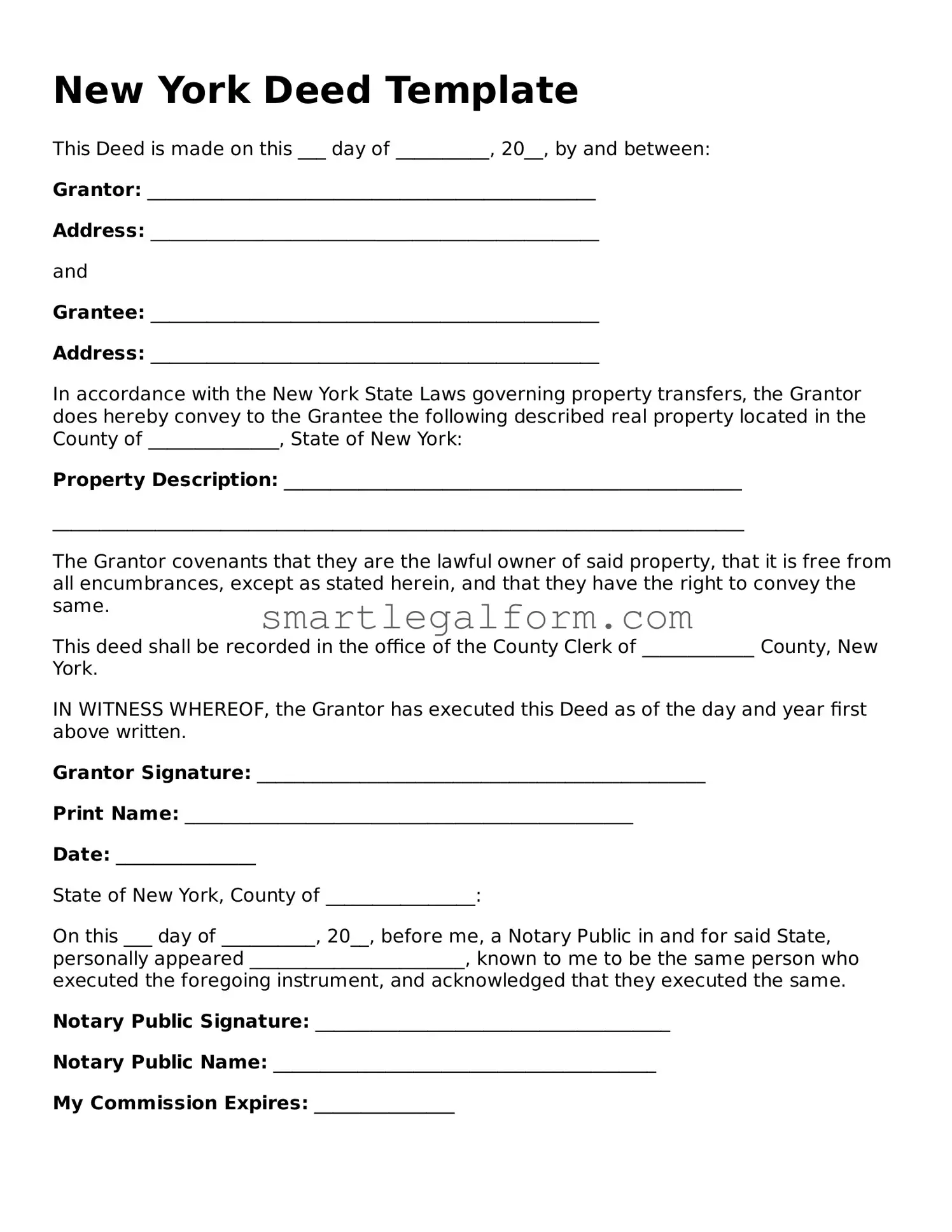New York Deed Template
This Deed is made on this ___ day of __________, 20__, by and between:
Grantor: ________________________________________________
Address: ________________________________________________
and
Grantee: ________________________________________________
Address: ________________________________________________
In accordance with the New York State Laws governing property transfers, the Grantor does hereby convey to the Grantee the following described real property located in the County of ______________, State of New York:
Property Description: _________________________________________________
__________________________________________________________________________
The Grantor covenants that they are the lawful owner of said property, that it is free from all encumbrances, except as stated herein, and that they have the right to convey the same.
This deed shall be recorded in the office of the County Clerk of ____________ County, New York.
IN WITNESS WHEREOF, the Grantor has executed this Deed as of the day and year first above written.
Grantor Signature: ________________________________________________
Print Name: ________________________________________________
Date: _______________
State of New York, County of ________________:
On this ___ day of __________, 20__, before me, a Notary Public in and for said State, personally appeared _______________________, known to me to be the same person who executed the foregoing instrument, and acknowledged that they executed the same.
Notary Public Signature: ______________________________________
Notary Public Name: _________________________________________
My Commission Expires: _______________
